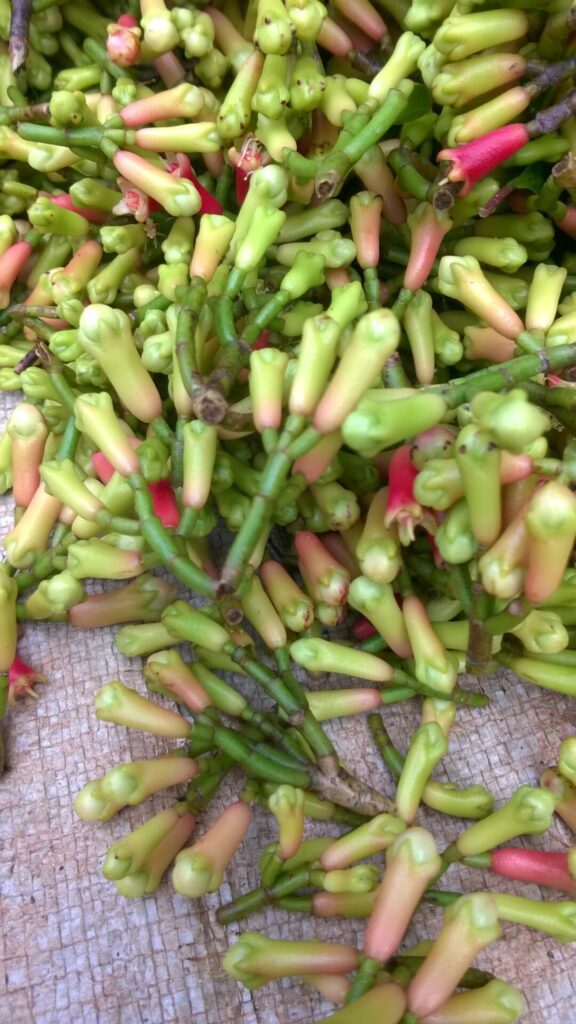Clove
Syzygium aromaticum (L.) Merr. & L.M.Perry
Myrtaceae
The clove tree is an evergreen tree of 10 to 15 m, native of the archipelago of the Moluccas in Indonesia. It bears many cream-colored flowers, which turn red during the flowering process.
Clove is obtained by drying the flower buds in the sun (the flowers are harvested before full blooming). It is a spice that has a triple interest: it aromatizes, facilitates digestion and allows better food preservation. Cloves are used in many spice blends such as “ras al-hanout” from North Africa, “5 perfumes” from China or “garam massala” from India.
Clove is now common in our kitchens but its use has long been considered as a manifestation of luxury and it fanned many greed.
In the Middle Ages, Europeans do not know where cloves come from and many tales are told on the subject: it was said that on an island near India, sailors would trade with forest genies depositing goods on a cost and finding cloves in exchange the following day.
In 1424, the Portuguese discovered the Maluku Islands, the only place at the time where cloves were grown. They take possession of the archipelago and establish a lucrative monopoly on clove. In 1605 it was the Dutch who supplanted them and took possession of the archipelago. The Dutch East India Company limits the cultivation of the clove tree to the only island of Amboine. Here is the double goal: to reduce production in order to increase prices and to avoid smuggling.
The destruction of clove trees on the island of Ternate causes the appearance of numerous epidemics in indigenous populations, probably protected until now by the presence of this powerful natural antiseptic.
In 1770, the French Pierre Poivre managed to steal clove plants to acclimatize on the island of France (now called Mauritius), of which he was governor. This is the end of the monopoly on this spice, which then spreads around the world: French Guiana, Madagascar, Zanzibar, Caribbean, Brazil.
The smell of cloves can remind us of many dentists’ offices because eugenol, the major component of clove oil, is a powerful local anesthetic and antiseptic still used today in the composition of certain dental cements. In just a couple of chemistry processes, eugenol can be transformed into synthetic vanillin (vanilla flavor), the cost of which is 300 times lower than natural vanillin.
Here is a winter recipe, to consume with moderation.
Mulled wine with spices
1.5 liters of red wine
100 to 250 g of brown sugar
1 lemon zest
1 orange zest
2 cinnamon sticks
2 star anise
2 cloves
1 piece of minced ginger
1 nutmeg grated with a knife tip
1 orange
Place all ingredients in a large saucepan
Bring to a gentle boil and simmer for 5 minutes
Serve hot by filtering with a strainer
